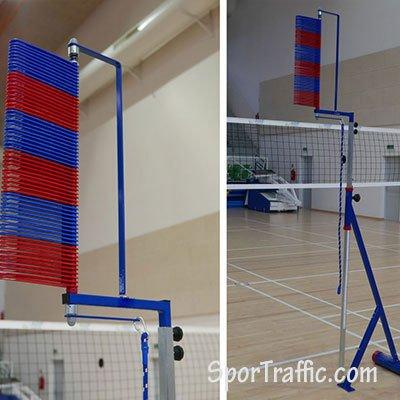In the dynamic world of basketball, the ability to elevate-literally-can make all the difference between scoring a game-winning basket and missing a crucial opportunity. Recent research published in Frontiers sheds new light on the factors that influence jump heights during two-foot running jumps, both with and without the added challenge of holding a basketball. This study delves into the biomechanics and physical conditions that determine how high athletes can leap, offering valuable insights for players, coaches, and sports scientists aiming to optimize performance on the court.
Factors Influencing Jump Heights in Two-Foot Running Jumps with and without a Basketball
Jump heights in two-foot running jumps are affected by multiple biomechanical and physiological elements, which vary depending on whether an athlete is holding a basketball. One of the most significant determinants is the arm swing mechanics; athletes without a basketball can utilize full arm momentum to generate greater lift, whereas carrying a ball limits this range of motion and impacts the vertical propulsion. Additionally, muscle activation patterns in the lower limbs differ, with loaded jumps (with basketball) requiring increased stabilization of the upper body, which can alter force production efficiency. These factors, coupled with the athlete’s core strength and balance, create a complex interaction that influences overall jump height.
Other critical contributors include approach velocity and takeoff angle. Athletes tend to adopt a more conservative takeoff angle when handling a basketball to maintain control, which can reduce jump height. Conversely, when unencumbered, jumpers exploit more optimal trajectories for vertical displacement. The following table summarizes key influences and their typical impact on jump height based on recent biomechanical analyses:
| Factor | Effect without Basketball | Effect with Basketball |
|---|---|---|
| Arm Swing Amplitude | Full range, +15% height | Restricted, −10% height |
| Muscle Activation | Balanced lower limb activation | Increased upper body stabilization |
| Approach Speed | Higher speeds achievable | Moderate reduction in speed |
| Takeoff Angle | Optimal 70°-75° | More conservative 60°-65° |
- Grip and ball control impose constraints on natural jumping motion.
- Core stabilization is heightened with ball possession for balance maintenance.
- Fatigue levels may rise faster when performing repeated jumps holding a basketball.
Biomechanical Insights Reveal How Ball Handling Affects Vertical Leap Performance
Research highlights that the mechanical demands of dribbling and ball control significantly influence the vertical leap during running jumps. When players handle a basketball, they experience altered arm swing dynamics, which directly affects angular momentum and jump efficiency. Specifically, reduced arm contribution to propulsion is observed due to the need to stabilize the ball, resulting in slightly diminished jump heights compared to jumps without the ball in hand. This adaptation, while subtle, is crucial in understanding game-day performance where ball handling is non-negotiable.
Moreover, the study identifies key biomechanical variables that differ between the two scenarios. Ground reaction forces (GRFs) demonstrate a distinct pattern, with a notable decrease in peak vertical force during ball-handling jumps. Additionally, players tend to adjust their knee flexion angles pre-takeoff to compensate for the weight and balance demands of the basketball. The table below summarizes these differences, offering clear insight into how ball possession reshapes jumper biomechanics on the court.
| Biomechanical Parameter | Jump with Ball | Jump without Ball |
|---|---|---|
| Peak Vertical GRF (N) | 1800 ± 120 | 1950 ± 110 |
| Arm Swing Range (°) | 45 ± 5 | 70 ± 7 |
| Knee Flexion Angle (°) | 90 ± 8 | 85 ± 6 |
| Vertical Jump Height (cm) | 62 ± 4 | 68 ± 5 |
- Arm constraint from ball handling limits jump power generation.
- Altered postural control affects takeoff mechanics.
- Adjustments in lower limb kinematics compensate for the added challenge.
Expert Recommendations to Enhance Jump Training for Basketball Players
Maximizing jump height in basketball requires a holistic approach that intertwines strength, technique, and neuromuscular conditioning. Experts emphasize the importance of plyometric training, which improves explosive power by enhancing the stretch-shortening cycle of muscles. Incorporating exercises such as depth jumps, bounding, and squat jumps into weekly routines can significantly increase vertical leap capabilities. Additionally, specialized drills focusing on ankle stiffness and hip extension are crucial for replicating game-like movements, particularly when jumping with or without the basketball.
Technique refinement plays an equally pivotal role in elevating jump performance. Coaches recommend a balanced focus on arm swing coordination and proper foot placement to optimize force generation. Attention to core stability and postural alignment during the run-up also impacts jump efficacy. Below is a comparison of training priorities when performing two-foot running jumps with versus without a basketball, facilitating tailored workout plans for athletes aiming to boost their in-game verticality:
| Training Aspect | Jump with Basketball | Jump without Basketball |
|---|---|---|
| Arm Swing Usage | Controlled, restricted for ball control | Full, maximizes lift |
| Focus Area | Grip strength and ball handling | Pure explosive power |
| Balance Training | High emphasis for stability | Moderate focus |
| Core Engagement | Critical for maintaining posture | Important but less restrictive |
- Customized plyometric drills should mimic real-game conditions to bridge training gaps.
- Consistent video analysis enables players to adjust mechanics for better jump efficiency.
- Recovery protocols enhance muscle readiness and prevent overuse injuries, vital during high-volume training phases.
Final Thoughts
In conclusion, the study sheds new light on the complex interplay of physical and biomechanical factors influencing jump heights in two-foot running jumps, both with and without a basketball. As athletes and coaches seek to optimize performance, these insights offer valuable guidance for training regimens tailored to the unique demands of the sport. Future research will be crucial in further unraveling the nuances of jump mechanics, ultimately helping players reach new heights on the court. Stay tuned to Frontiers for more breakthroughs in sports science.

